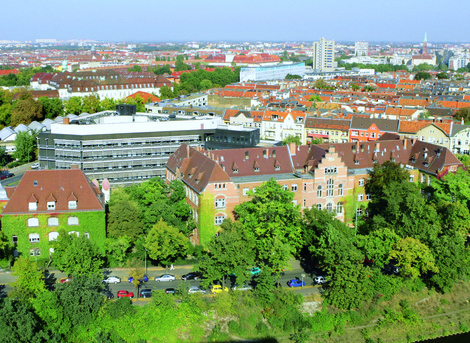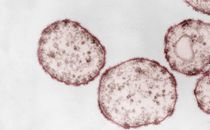Project Group 6: Metabolism of microbial pathogens
- Head:
- Martin Blume
Persistence of pathogens is a hallmark of many zoonotic infections with bacterial, fungal and parasitic pathogens. These infections remain difficult to treat medically. To study persistence and facilitate the development of new chemotherapies, we established a human skeletal muscle-based system allowing us to study the persisting bradyzoite stage of Toxoplasma gondii in vitro. Toxoplasma gondii is an Apicomplexan parasite that infects virtually all warm-blooded animals and causes life-long infections in up to 25% of humans globally and 50% in Germany. Although, acute Toxoplasmosis, caused by fast replicating tachyzoites can be targeted by a range of antiparasitic drugs, there are currently no eradicating treatments of chronically infecting bradyzoites. These inhabit so called tissue cysts that reside mostly in the hosts muscle and brain tissue and are responsible for transmission via undercooked meat products from infected life stock and also remission in immuno-weakened individuals.
Our project group builds on the in vitro bradyzoite culture system in three ways:
(1) Screening of potential antimicrobial compounds
To identify compounds for eradicating treatments of bradyzoites, we use a range of criteria to identify promising candidates from freely available compound libraries that contain both novel and also already approved drugs. We test for cytotoxicity and for static or cidal efficacy against T. gondii tachyzoites and bradyzoites.
(2) Recording of parasite metabolic signatures
We employ our own as and liquid chromatography-coupled mass spectrometers for untargeted, targeted and isotope-resolved measurements of the parasites’ metabolome and metabolite turnover. To interrogate the importance of metabolic traits we interfere using pharmacological means. We also use metabolomics approaches to investigate the modes of action of compounds with anti-parasitic activity.
(3) Systematic qualification of in vitro bradyzoites as a 3R system to replace, reduce and refine animal experiments.
To this end, we compare various phenotypic aspects of the in vitro bradyzoites with their in vivo counterparts. We also test the fitness conferring potential of genes that are implicated in various aspects of the parasite’s biology, such as egress, motility, invasion and metabolism comparatively in in vivo and in vitro environments.


Shown are T. gondii tachyzoites in green and a bradyzoite-filled tissue cyst in red. The left seide details our metabolomics pipeline consisting of high-resolution LCMS and a GCMS instrument with an exemplary dataset comparing drug-treated and untreated parasite metabolomes. The right side illustrates the screening of antimicrobial compounds. We combine both approaches to identify the modes of action of antimicrobials that act against bradyzoites and tachyzoites. (Sources: RKI; chemical compounds: Wikipedia; capsules: BanzaiTokyo / Wikimedia Commons)
We are always welcoming interested and motivated students to join us for their MSc, BSc and PhD theses. We also have vacant student assistant positions.




